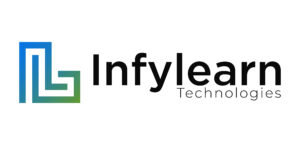The Importance Of Interactivity In eLearning
Interactivity in eLearning refers to the extent to which learners can actively participate in their learning process. Interactive elements include quizzes, simulations, drag-and-drop activities, discussion forums, and multimedia content. These components make learning more engaging and can significantly improve knowledge retention and application.
Benefits Of Interactivity
- Enhanced engagement
Interactive content captures learners’ attention and keeps them involved, reducing the likelihood of distraction. - Improved retention
Active participation in learning activities helps reinforce concepts, leading to better retention of information. - Immediate feedback
Quizzes and interactive exercises provide instant feedback, helping learners correct mistakes and understand concepts more deeply. - Practical application
Simulations and scenario-based learning allow learners to apply knowledge in real-world contexts, enhancing their problem-solving skills.
The Necessity Of Accessibility In eLearning
Accessibility ensures that eLearning content is usable by all individuals, including those with disabilities. This encompasses a wide range, including visual, auditory, motor, and cognitive impairments. Accessible design follows guidelines such as the Web Content Accessibility Guidelines (WCAG) to create inclusive learning experiences.
Benefits Of Accessibility
- Inclusivity
Accessible eLearning ensures that all learners have equal opportunities to learn and succeed. - Legal compliance
Many countries have regulations requiring digital accessibility, such as the Americans with Disabilities Act (ADA) in the United States. - Broader audience
Accessible courses can reach a wider audience, including older adults and people with temporary disabilities. - Enhanced usability
Accessibility features often improve the overall usability of eLearning content for all users.
The Trade-Offs Between eLearning Interactivity And Accessibility
Creating eLearning content that is both highly interactive and fully accessible can be challenging due to several trade-offs:
Complexity Vs. Simplicity
- Interactivity
Highly interactive elements often involve complex designs and advanced technologies, which can be difficult to make accessible (e.g., level 2.5 and above) - Accessibility
Simpler designs are generally easier to adapt for accessibility, but they may not provide the same level of engagement and interactivity.
Multimedia Use
- Interactivity
Multimedia, such as videos, animations, and audio, can enhance interactivity and engagement. - Accessibility
Multimedia content requires additional efforts to be accessible, such as providing transcripts, captions, audio descriptions, and ensuring compatibility with screen readers.
Navigation And User Interface
- Interactivity
Interactive eLearning often involves complex navigation structures, including clickable elements, drag-and-drop interfaces, and branching scenarios. - Accessibility
These complex navigation structures can be challenging for learners using assistive technologies, requiring thoughtful design to ensure that they are navigable and understandable.
Time And Resources
- Interactivity
Developing highly interactive content can be time-consuming and resource-intensive. - Accessibility
Ensuring that interactive content is also accessible adds an additional layer of complexity, requiring more time, expertise, and resources.
Solutions For Balancing Interactivity And Accessibility
Despite the trade-offs, it is possible to create eLearning content that is both interactive and accessible by implementing thoughtful strategies and best practices:
Incorporate Accessibility From The Start
- Proactive design
Integrate accessibility considerations into the initial design and development phases, rather than retrofitting existing content. This approach ensures that accessibility is a fundamental component of the course. - Universal design
Adopt universal design principles, which aim to create content that is usable by the widest possible audience, regardless of ability or disability.
Use Accessible Technologies
- Authoring tools
Select eLearning authoring tools that support accessibility features. - Standards compliance
Ensure that all multimedia elements comply with accessibility standards, such as providing alternative text for images, captions for videos, and ensuring compatibility with screen readers.
Simplify Navigation
- Clear structure
Design clear and straightforward navigation paths, avoiding overly complex structures that can be difficult to navigate with assistive technologies. - Keyboard accessibility
Ensure that all interactive elements can be accessed and operated using a keyboard, providing alternatives to mouse-based interactions.
Provide Multiple Means Of Representation
- Alternative formats
Offer content in multiple formats to accommodate different needs, such as text, audio, and video. - Descriptive transcripts
Provide detailed transcripts for audio and video content, including descriptions of visual elements for learners with visual impairments.
Regular Testing And Feedback
- User testing
Conduct usability testing with learners who use assistive technologies to identify and address accessibility issues. - Continuous improvement
Gather feedback from learners on the accessibility and interactivity of the content, and use this feedback to make continuous improvements.
Training And Awareness
- Staff training
Provide training for Instructional Designers and developers on accessibility best practices and the importance of inclusive design. - Awareness campaigns
Promote awareness of accessibility within the organization to foster a culture of inclusivity and commitment to accessible design.
Conclusion
Balancing interactivity and accessibility in eLearning is a complex but achievable goal. By understanding the trade-offs and implementing thoughtful solutions, educators and developers can create engaging, interactive, and accessible learning experiences that benefit all learners. Embracing both interactivity and accessibility not only enhances the learning experience but also ensures that eLearning content is inclusive, equitable, and compliant with legal standards.
Editor’s Note: check out our directory to find, choose, and compare eLearning Industry’s Top LMS Software.

Infylearn Technologies
Your most trusted Global Learning Transformation Partner delivering Quantifiable Impact. Inspiring | Innovative | Inclusive

